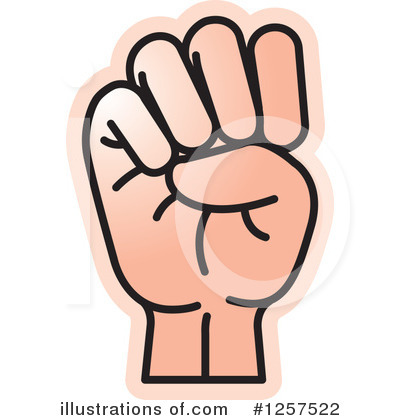

The “Small C”, “Reduced C”, or “Bent L” handshape (but note that “Bent L” may also be used to mean the shaped described as “ Open X”). The fingers are together and partially bent from the palm at the base joint but otherwise extended, and the thumb is opposed and parallel with the fingers. The thumb is opposed and curved so the thumb and index finger resemble the letter C. This shape is also known as “extended B”, “open hand”, and “closed 5”. All four fingers are extended and together and the thumb is extended to make a flat hand with a gap between the thumb and the edge of the hand. This shape is also known as the “flat hand”. All four fingers are extended and together and the thumb is flat against the radial edge of the hand. The thumb is flat along the radial edge of the hand. The fingers are together and bent at the base but otherwise extended. The “Bent B” (or “Bent Hand”) handshape, also known as the “bent hand”. The fingers are together and extended to form a flat plane with the palm.

The tip of the thumb touches the tip of index finger, forming a loop. The ASL “9” handshape, also known as the ASL “F” handshape. The fingers and thumb are spread with the middle finger bent at the base joint and all other fingers extended. The thumb is opposed and bent across the palm, restraining the fingernail of the middle finger.

The middle finger is closed, the other fingers extended and spread apart. The thumb is opposed and bent across the palm, restraining the fingernail of the ring finger. The ring finger is closed, the other fingers extended and spread apart.

The thumb is opposed and bent across the palm, restraining the fingernail of the little finger. The little finger is closed, the other fingers extended and spread apart. Also known as the “clawed E” and “clawed hand”. All fingers and the thumb are spread and slightly bent at each joint to form the shape of a claw. All four fingers are extended and spread apart. The thumb is opposed and closed to the palm. The thumb is extended, the index and middle fingers are hooked by extending the proximal/base joints but bending the medial and distal joints, and the other fingers are curled into a fist. The other fingers are closed to the palm. The index finger and middle finger are extended and spread apart. The thumb is opposed and closed so the thumb pad restrains the middle finger. Only the index finger is extended, the other fingers curled into a fist. The other type of handshape specification in entry pagenames is a simplified version of the system used in hold-move charts, used when (a) the list below does not include the handshape or (b) the sign language for the entry does not align well with the list of common handshape names below. One type is used in entry pagenames for select handshapes with common names. In entry pagenames, there are two types of handshape specifications. In hold-move charts, sign language hand configurations are specified in separate attributes for the forearm, the fingers, and the thumb.


 0 kommentar(er)
0 kommentar(er)
